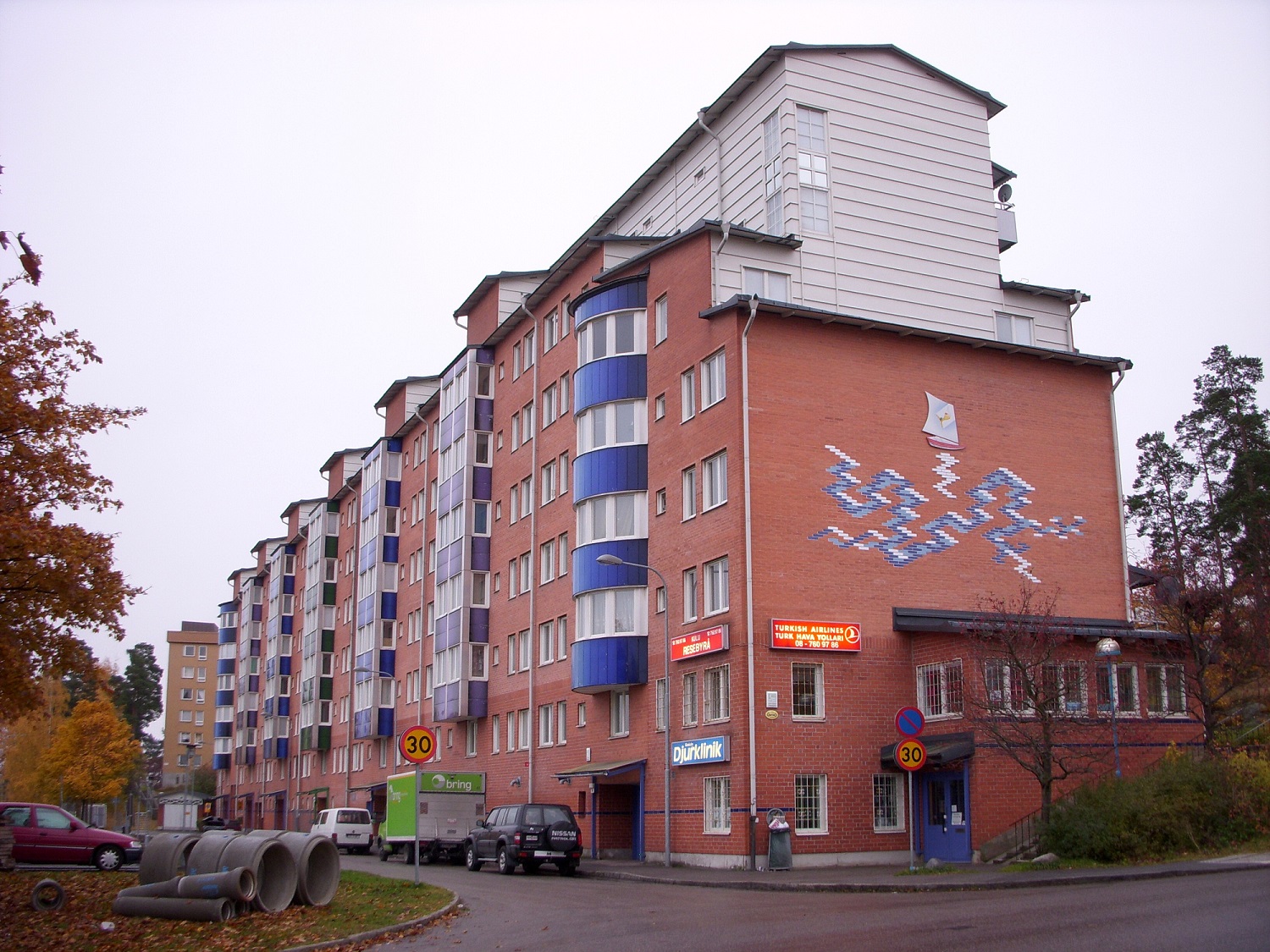Urban vernacular in Sweden
Rinkebysvenska or Rinkeby Swedish is a contemporary urban vernacular (CUV) which has developed in multi-ethnic urban areas of Sweden including a suburb of Stockholm called Rinkeby. This speech variety is mainly used by young people in addition to other languages and language varieties depending on context, and its use is reflected in rap and fiction.

Rinkebysvenska is a speech variety of Swedish which has developed in multi-ethnic areas of cities like Stockholm, Gothenburg and Malmö, named after one of the north-western suburbs of Stockholm, Rinkeby. The term was first used by Swedish language researcher Ulla Britt Kotsinas who, in the 1980s, carried out studies on the language use of a group of youths in the multilingual suburb of Rinkeby. Internationally, linguistic practices similar to rinkebysvenska have been labelled ‘multi-ethnic youth slang’, ‘urban dialects’, or ‘youth styles’, and most recently ‘contemporary urban vernaculars’ (CUV). The emergence of rinkebysvenska and similar linguistic practices has, by some researchers, been explained by the social circumstances surrounding European work force migration after World War II.
Rinkebysvenska is mainly spoken by young people who have grown up in multi-ethnic urban areas, but also by individuals living in fairly homogenous areas who feel affiliated to the multi-ethnic neighbourhoods. Rinkebysvenska is used for informal peer interaction, and co-exists with other linguistic practices within the same community, e.g. standard Swedish. For instance, it can be used in the private domain between young males as opposed to the work domain, where the same individuals switch to standard Swedish. Rinkebysvenska is, then, described as a marker of identity, both within the peer group and towards other groups. Occasionally, rinkebysvenska has been ideologically evaluated as ‘bad’ and ‘deviant’, by the Swedish media for instance. It has also been associated with aggressive sexist and homophobic masculinity and perceived by some groups and individuals as socially stigmatising and a negative manifestation of non-Swedish ethnicity.
With respect to its structural characteristics, rinkebysvenska has not yet been extensively studied. However, existing studies show that some salient linguistic characteristics are:
- a staccato prosody that is most accurately described as a shortening of Swedish vowel length;
- loan words from the surrounding migrant languages and English; and,
- a systematic use of the subject-verb word order after certain adverbials instead of the inverted verb-subject order characteristic for standard Swedish
Rinkebysvenska seems to have undergone at least some level of codification as it appears in rap texts, Swedish fiction, and dictionaries.
Further reading:
- E. Bijvoet and K. Fraurud, ‘What’s the target? A folk linguistic study of young Stockholmers’ constructions of linguistic norm and variation’, Language Awareness, 25, 1–2 (2016), pp. 17–39.
- T. M. Milani and R. Jonsson, ‘Who's Afraid of Rinkeby Swedish? Stylization, complicity, resistance’, in Journal of Linguistic Anthropology, 22, 1, (2012) pp. 44-63.
- U. Freywald, L. Cornips, N. Ganuza, I. Nistov, and T. Opsahl, ‘Beyond verb second – a matter of novel information-structural effects? Evidence from Norwegian, Swedish, German and Dutch’, in J. Nortier & B. Svendsen, eds., Language, Youth and Identity in the 21st Century: Linguistic Practices across Urban Spaces (Cambridge: Cambridge University Press, 2015) pp. 73-92.